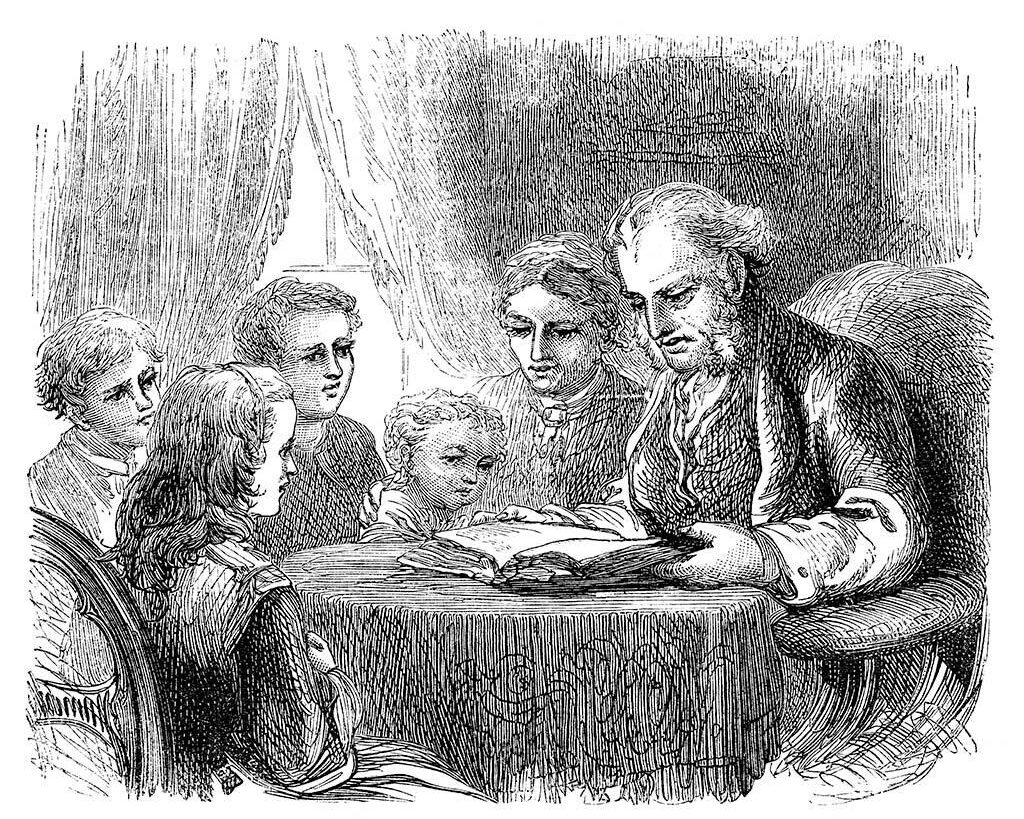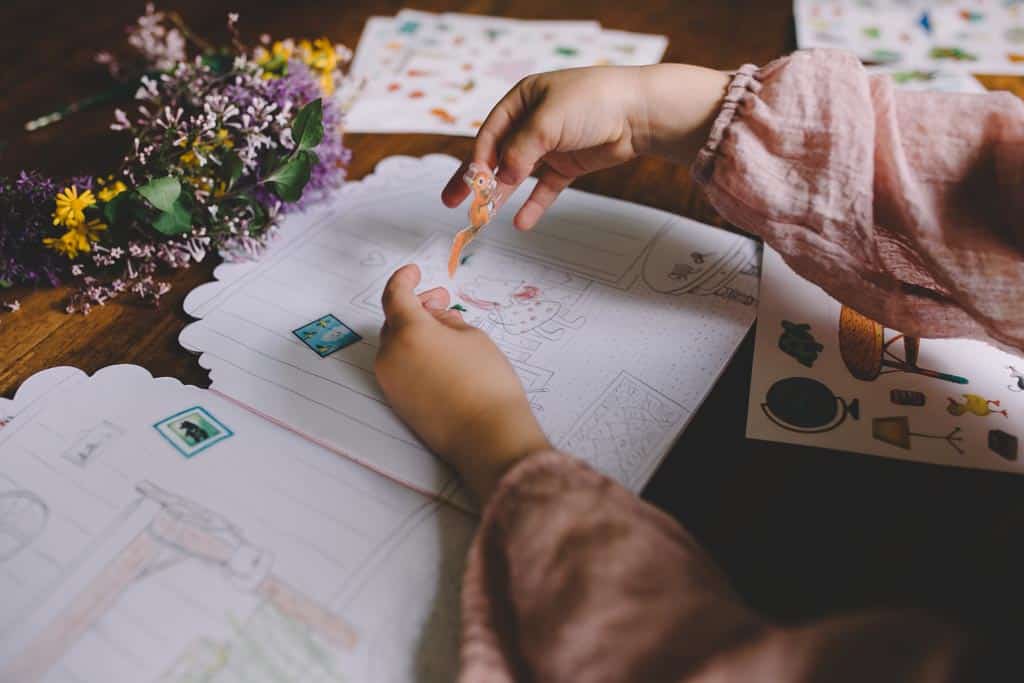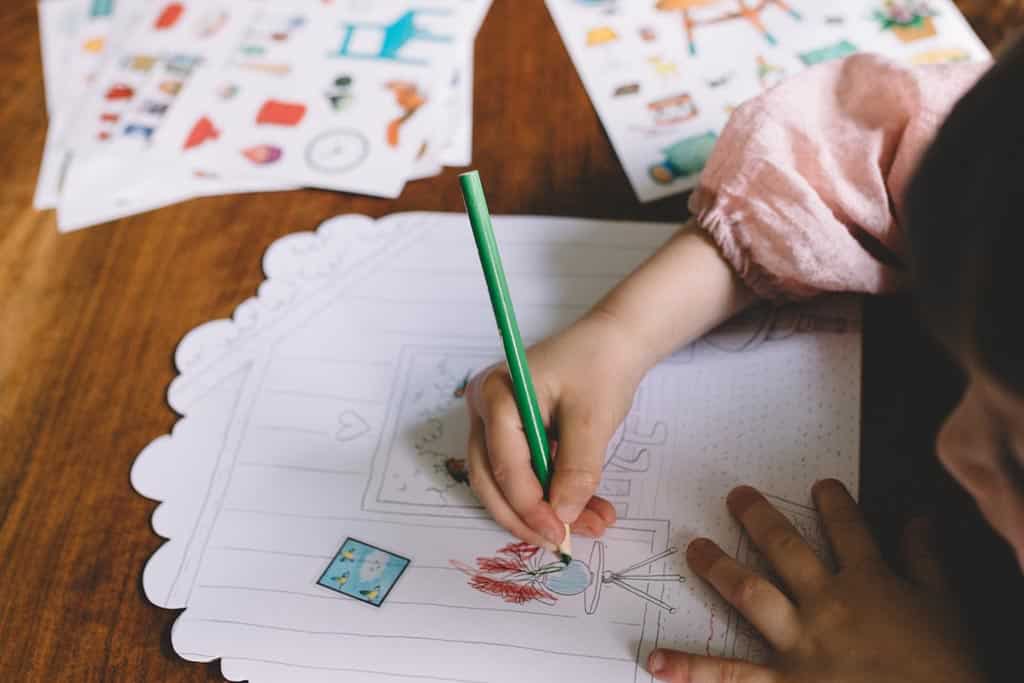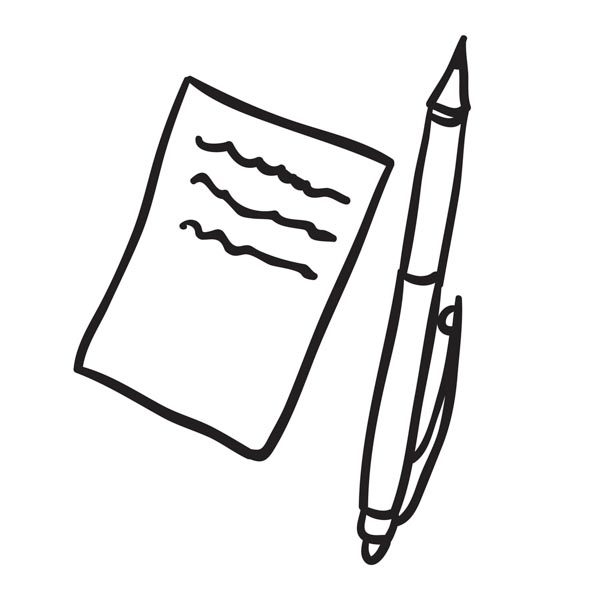We hear a lot about teaching children to read too early, and it’s certainly true that it’s not right for every child. Your child will get to grips with phonics, but she might not be ready until she starts school.
If this sounds like your child, don’t worry, there is plenty of time. Leave it to her teacher and trust that it will happen in good time.
But as you are reading this, you’re probably thinking about doing some simple exercises with your child before then. Maybe she has already begun to look at letter sounds at nursery or pre-school. While we’d never support pushing a child to read before they’re ready, if your child seems keen to start, it’s always good to work with their enthusiasm.
So what’s reasonable to expect them to have mastered by September? Learning the letter sounds is a good start. Once they know which sounds go with which symbols (letters) on the page, it’s a very easy glide into reading whole words and sentences.
Learning to read comes in two parts
There are two main aspects of reading: reading the words and comprehending their meaning.
Reading can be broken down into two parts: decoding and tricky words.
Decoding. This is phonics. When a child encounters an unfamiliar word, they try to sound it out by using their knowledge of letter sounds. For example, seeing the word cat and knowing that it is made up of the sounds c, a and t.
Tricky words. These are words that can’t be sounded out, such as was (unhelpfully pronounced woz). They have to be memorised.
Over time, as children get better at reading, they recognise more words automatically, without first having to decode them. These words become part of what’s known as their ‘sight vocabulary’.
Comprehension is about being able to follow a story and what the individual words mean as a whole, not only on their own.

Flash cards, such as these by Oxford Reading Tree, are a great way to quickly build a sight vocabulary of the most common words.
What is phonics?
The individual sounds in a word are called phonemes. A phoneme is often a letter, but it can also be a combination of letters. So a is a phoneme (like the a in cat and apple). But, so too are ai, as in rain, and th as in think.
To make matters more difficult, each phoneme can be written in a variety of ways, so the u sound can be written u, o, oo and ou, as in jug, front, flood and double. The way a sound or phoneme is written is called a grapheme.
By now you can see that some words will be easier to sound out than others. Cat contains regular, easy to decode sounds. Thought, on the other hand, though consisting of seven letters, is only made up of three sounds: th, or and t. It requires much more skill to decode.
When teaching reading, we therefore start with the phonemes that have the most straightforward spellings. Schools often begin with s, a, t, p. By learning to recognise just these four letters and the sounds that they make, we can read a handful of words and even some simple sentences, like Pat sat at a tap.
At the same time, teachers will introduce some tricky words, as these are also often the most commonly used (such as no, go, I, the, to). Now much longer sentences can be created. They are still mostly nonsensical, but adding a few tricky words allows a child who has only been reading for a week to attempt: I go to the tap to pat a rat.
The next sounds to be introduced are i n m d. Can you see the possibilities after just two weeks? Dad, stand, mend, pasta, stamp, etc. Remember, at this stage, however, to keep to the main sound for each letter. So a is always as in apple and not in space.
Week 3: g, o, c, k
Week 4 ck, e, u, r
Week 5: h, b, f, ff, l, ll, ss
So, by half term most of the alphabet has been covered and your child will be well on the way to being a reader.
During this period, when phonics is taught intensively, ‘real’ books are avoided – apart from at story time, of course. Everything a child reads should be decodable, so stick to a reading scheme, such as Oxford Reading Tree’s Read with Biff, Chip and Kipper.
If reading schemes seem uninspiring it’s because each book is strictly limited to words that can be made from the sounds that the child already knows. So a Level 1 book will be made up only of words containing the letters s, a, t, p, plus any tricky words that have been introduced.
Adults imagine that it must be a joyless time but it’s only for a short period and children are exhilarated to discover that they can read so effortlessly.
Here are our top tips for simple, stress-free letter sounds (and maybe a little bit of reading) by September:
Say letter sounds correctly
Confusingly for children, and their teachers, there are 26 letters in the alphabet but 44 phonemes (sounds). When we teach children to read, we start with the sounds letters make rather than their names. The letter a is taught like the a in cat. The letter i usually makes an i sound as in igloo. But the i phoneme, the i sound, can also be made in the following ways:
england
women
busy
build
gym
sieve
To make matters worse, the letter i can make other sounds, too, like pint, and combined with other letters can make yet more: friend, rain. That’s why we teach children the most common sounds to begin with, so a as in cat, e as in egg, i as in igloo, o as in octopus and u as in umbrella.
Try also to say the pure phoneme and not add ‘uh’ to the end. So it’s d instead of duh, although this is easier said than done. Once children know the sounds letters make, they can break unfamiliar words down into their constituent sounds, spell them out and start to read.
Learn the alphabet and match letters to sounds

The Biff, Chip and Kipper series by Oxford Reading Tree contains activities as well as stories, so children can practise all the skills required to read their first words. Playing I-Spy with letter sounds draws attention to a word’s initial sound, the first step in decoding the whole word.
Knowing the alphabet is not the same as learning phonics. A helpful way to introduce this idea to your child is to talk about animals and the sounds they make. For example, the name is cow and the sound it makes is moo. In the same way, the letter is ‘a’ and the sound is a (as in apple).
Learning the alphabet is straightforward. Sing the alphabet song at every opportunity so that your child is familiar with all the letter names. Then help to match the names to the symbol (i.e. the letter) by singing the song whilst pointing to an alphabet chart or frieze. YouTube is your friend here. The One Hundred Toys gremlins all enjoy Super Simple Songs’ videos and the playlist below is great because the alphabet songs are followed by those for phonics, which reinforces the idea that letters have both names and sounds:
You can also play games such as I-Spy. Play it the traditional way using letter names and then repeat using sounds instead. Letter sound flash cards work well for this kind of activity, too.
Another fun activity is to create a sound tray. Get a tray or box and ask your child to fill it with things that start with today’s sound. So, if you are focusing on s, you might collect a snake, a sock and a sieve. But not a shoe. Remember, it’s the initial sound that’s important, not the letter.
Start to read simple words
Long before your child reads their first word, you can teach them to ‘read’ sounds. This is called oral blending. For example:
[remember to say letter sounds not the names]
Put on your h–a–t, hat.
Please bring me my c–oa–t, coat.
Where is the b–oo–k, book?
Then, when you read with your child, even before they are able to recognise all the letters, you can do the same activity by segmenting a word in the text. On Sunday the caterpillar ate through one green l–ea–f.
By the time your child has learnt their letters, blending will be firmly established and decoding words will be much quicker.
Blend sounds to make words

Alphabet flash cards, again by Oxford Reading Tree.
The same skill of blending is used for reading words on the page.
Sound out the individual phonemes, e.g. c–a–t
Repeat the sounds more quickly, with less of a pause between each one, e.g. c–at
Put all the sounds together and say the word: cat
If your child has trouble with some of the sounds, you can perform Steps 1 and 2 yourself, which will usually enough for them to work out the rest.
Only beginner readers need to sound out every word. Over time, their sight vocabulary, those words they recognise immediately, will grow. But, they will still need to work out new and long words.
Sounds can be represented by more than one letter
More advanced readers will notice that some sounds are made up of more than one letter, for example ch, sh and ng. That is impossible to sound out if you read it as t–h–a–t. Instead, learn to recognise that when t and h are together, they make th. So that is read as th–a–t.
Tricky words
Many common words can’t be sounded out: was, is, and the, for example. These are known as tricky words and have to be learnt by sight. Repeated practice is the only way to do this and flash cards, though often derided, have an important role to play here.
Here’s a list to get you started: like, said, no, you, too, come, my, she, me, they, of, was, we, he, the, day, all, go, are, play, away, going.
Some of the above start as tricky words and become decodable once the phoneme has been taught, for example the ay sound in play. Others, like come, are true tricky words.
Practise daily
Learn the letter sounds over a short period. Build up a knowledge of the letters and sounds quite quickly with your child and keep practising so that it becomes automatic.
The same goes for tricky words. Put them on a post-it and stick them on the fridge or use flash cards. Look at the words 3 – 4 times a day.
Don’t rely on the pictures

Cover up the picture of the van and see if your child can still read the word.
The true test of reading is the ability to recognise words and letters without relying on other cues. When children encounter a difficult word, they will often look at the picture for a clue. This is a legitimate strategy, but only if they have tried decoding first. Cover the pictures occasionally, and see if it highlights problems that you hadn’t noticed.
Encourage accuracy
As adults, we don’t sound out every word as we read. Almost every word we encounter is already in our sight vocabulary. Children, however, rely on a number of different strategies. Often, they will guess the word using the first letter as a clue, for example saying house when the word on the page was home. </p> <p>Or they will use what are known as syntactic cues, where a word’s position in a sentence suggests that is it going to be a certain type of word. e.g. ‘Bernard went to the shop’ may be read as ‘Bernard went to a shop’ because it makes sense in the context of the sentence. These mistakes can be hard to weed out because the child wasn’t actually looking at the word. They thought they knew what the sentence was about so they sped past the mistake. Where this happens, gently ask your child to go back to the beginning and read the sentence again – as many times as it takes – until they spot the error themselves.
Read books from a reading scheme

Floppy did this! by Oxford Reading Tree.
If you’re not already familiar with reading schemes, you soon will be. These books differ from ‘real’ books in that they only contain words that are appropriate for you child’s reading level. As your child grows in confidence, they can progress to the next level in the series, where the new, more difficult words are introduced.
The first level of a reading scheme comprises books without words. The pictures tell the story. You can ‘read’ this to your child and encourage them to ‘read’ it back to you.
Level 2 books contain words made up of just a few letters, usually based around s a t p i n. For example, the Oxford Reading Tree book, I am Kipper, contains the following text:
I am Pam, I tap, tap, tap.
I am Mat, I pat, pat, pat.
I am Pat, I pop, pop, pop.
etc.
As more sounds – and tricky words – are learnt, the books become more challenging.
It is also important to read daily to your child, both fiction and non-fiction. Keep it fun by choosing ‘real’ books rather than reading schemes: this is not the time to see if your child can apply their phonics knowledge. Reading regularly will:
- Instil a love of books
- Broaden vocabulary
- Improve comprehension
- Model ‘correct’ language
All of the above are picked up incidentally. Just choose a book that your child enjoys.
Independent reading is also vital. A comfortable and inviting reading corner somewhere at home might be all that’s needed to instil the reading habit in your child. Gather some cushions, a small bookcase or box, and a good mix of interesting books. It doesn’t have to be anything special, just a quiet corner to enjoy undisturbed reading. Refresh the collection occasionally, whether by buying something new or borrowing from the library and keep the selection varied. Comics, newspapers, flyers and recipe cards all count, as do holiday brochures and the prospectus from your child’s new school.
Learning to read is about more than simply learning to decode and recognise tricky words. Ultimately, reading is about comprehension. We read to learn.
Help your child to understand more of what they read by following these guidelines:
- Look at the cover of the book. What is it about? Is it story or some other kind of book? Who is the author? Do you think that you will like this book?
- Predict what is going to happen next. Stop after you have read a few pages and ask your child to imagine how the book might end.
- Draw characters in the book and discuss their physical characteristics personalities. This helps draw attention to details.
- Identify unfamiliar words and discuss their meaning before tackling the book so the flow isn’t disrupted too much.
- Take a few key events from the book and try to arrange the events in order (use drawings if you prefer)
- Independent reading should be at what is called ‘instructional level’, where nine out of 10 words are familiar. This way your child can read quickly, understand the text without support and work out what unfamiliar words mean from the context. Too many difficult words reduces comprehension and dampens the spirit.
- A full life, rich in interesting experiences is the best way to increase comprehension. This doesn’t have to mean trips to Timbuktu; a train to the seaside or a day collecting bugs in the woods will both make a strong impression and introduce lots of new vocabulary.
Summary
- Begin with just four letter sounds: s, a, t, p
- Memorise tricky words
- Build up slowly, adding a few letters each week.
- Flash cards and reading schemes can help.
Read more about starting school.
Are you ready for school?
Do you have a preschooler? Would you like them to develop some key skills before starting school? How wonderful to go into school on that first day feeling like you belong.
Get Set Five is a year-long course full of fun and free activities to do with your child.




